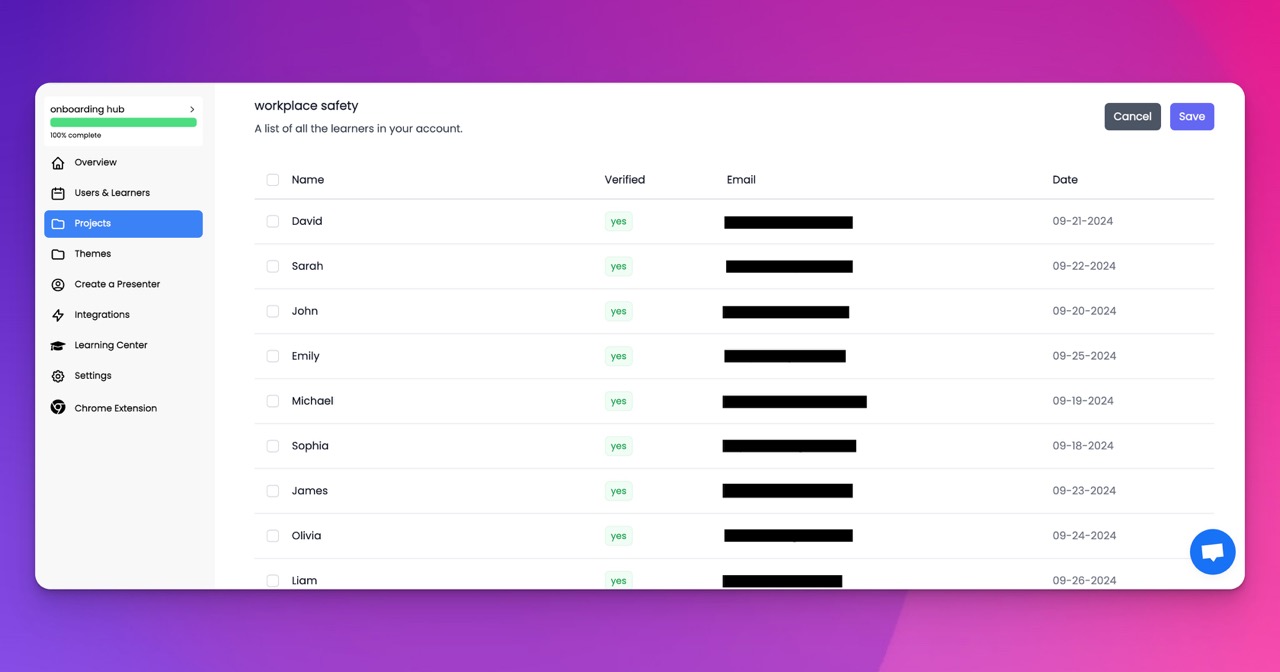🎉 Trainday now integrates with Zendesk and Hubspot 🎉 Trainday now integrates with Zendesk and Hubspot 🎉 Trainday now integrates with Zendesk and Hubspot
🎉 Trainday now integrates with Zendesk and Hubspot
Contact
Restaurants
Workforce Development through Employee Training in Restaurants
Revolutionizing Workforce Development in Restaurants: Leveraging Data and AI for Efficient Employee Training
In today's competitive landscape, the success of any restaurant hinges on its ability to deliver exceptional customer service and maintain a highly skilled workforce. With the advent of data analytics and artificial intelligence (AI), restaurant owners and managers now have a powerful tool to streamline employee training, ensuring relevance and rapid skill development. In this blog post, we will explore how data and AI can revolutionize workforce development in the restaurant industry, enabling the creation of targeted and efficient training courses in record time.
1. Harnessing the Power of Data:
Data-driven insights play a vital role in identifying employee training needs and potential skill gaps. Restaurants can leverage various data sources, such as customer feedback, employee performance metrics, and industry benchmarks, to identify areas that require improvement. By analyzing this data, restaurant owners and managers can gain valuable insights into specific skills and competencies that need to be addressed through training.
2. Utilizing Artificial Intelligence (AI) for Targeted Training:
AI has emerged as a game-changer in many industries, and the restaurant sector is no exception. By utilizing AI algorithms, restaurants can develop personalized training programs tailored to individual employee needs. AI can analyze employee data, such as past performance, learning preferences, and job requirements, to create customized training modules. This approach ensures that employees receive training that is relevant to their roles, maximizing efficiency and productivity.
3. Rapid Course Development through AI:
Traditionally, creating training courses could be a time-consuming process. However, with the integration of AI, restaurants can significantly accelerate the course development timeline. By utilizing AI-powered content generation tools, training materials can be generated at lightning speed. AI algorithms can analyze vast amounts of data, including industry trends, best practices, and regulatory requirements, to create comprehensive and up-to-date training content, reducing the time required to design and develop training courses.
4. Real-time Performance Analytics:
AI-powered training platforms allow for real-time monitoring and assessment of employee performance. By capturing and analyzing data on employee progress, managers can identify areas where additional training is needed or where employees excel. Real-time performance analytics enable managers to provide timely feedback and support, ensuring continuous improvement and overall success.
5. Gamification and Interactive Learning:
Data and AI can also enhance the training experience by incorporating gamification and interactive learning techniques. Through the analysis of employee data, AI can identify preferred learning styles and create engaging training materials that promote active participation. Gamification elements, such as quizzes, challenges, and rewards, can be integrated to make the training process more enjoyable, leading to increased motivation and knowledge retention.
Conclusion:
In the fast-paced restaurant industry, staying ahead of the competition requires a highly skilled and adaptable workforce. By harnessing the power of data analytics and artificial intelligence, restaurants can create relevant and efficient employee training courses in record time. Leveraging data-driven insights, AI algorithms can design personalized training programs, ensuring that employees receive the necessary skills to excel in their roles. Moreover, real-time performance analytics and interactive learning techniques further enhance the training experience, promoting continuous improvement and driving overall success. Embracing this technological revolution in workforce development will undoubtedly position restaurants for long-term growth and sustainability.
Accelerate Compliance.
Deliver OSHA-Ready Courses Instantly.
Empower your team with data-driven training solutions tailored to your industry's safety standards. Stay compliant, reduce risks, and boost productivity with AI-powered course creation.
